|
Euclid (East 45th Street) Lamp Plant |
|
Introduction
The Euclid Lamp Plant of the General Electric Company of America enjoyed one of the longest and most interesting histories of perhaps any lamp factory worldwide. It was founded in 1879 by Charles F. Brush as the manufactory for a revolutionary carbon arc lighting system that he developed, but quickly transitioned to the production of incandescent lamps. Following various takeovers and transformations, of both the buildings on the site as well as the commercial structure, it ultimately ended up as a factory of GE Lighting who continued the lampmaking operations for an incredible 129 years until its closure in 2008.
|
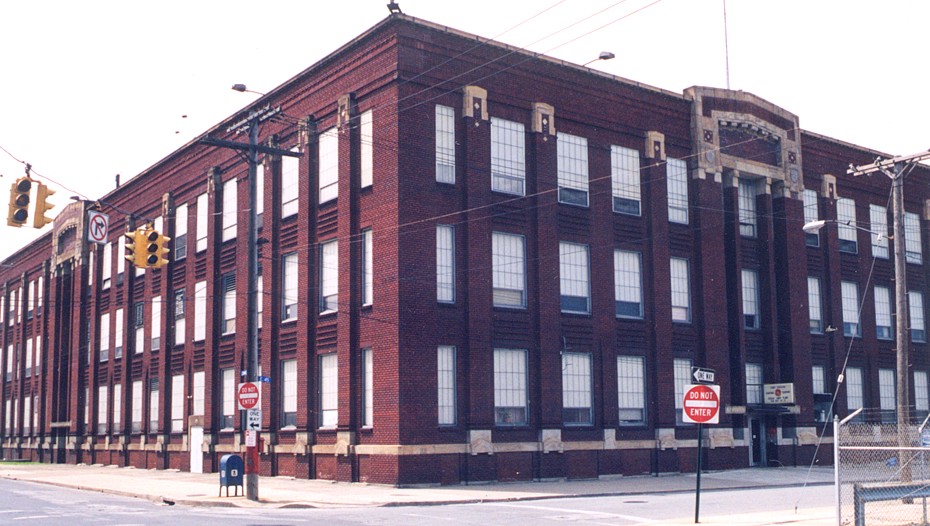 General View of the Euclid Lamp Plant of General Electric U.S.A., taken in 1997.
General View of the Euclid Lamp Plant of General Electric U.S.A., taken in 1997.
|
| Address |
1814 East 45th Street (formerly Belden Street), Cuyahoga, Cleveland, Ohio, USA. |
| Location |
41.5085°N, -81.6558°E. |
| Opened |
1879. |
| Closed |
2008. |
| Floorspace |
73,000 sq.ft. (6,782 m²). |
| Products |
Carbon Arc Lamps, Carbon Electrodes, Incandescent Carbon Filament, Incandescent Tungsten Filament comprising the types General Service, Rough Service, 3-Way Mogul, Coloured, Decorative, Single Ended Tubular, Miniature Butt Seal, Miniature Drop Seal, High Wattage Projection, Automotive Halogen. |
Start of Operations under Brush (1, 2)
The factory was originally founded by the famous American inventor, Charles F. Brush, following his invention of a superior carbon arc lighting system. This covered not only the arc lamp itself, but also the entire electrical system including the generators. Although the name of Brush has long since disappeared from the lighting industry, it remains an international force in the construction of electricity generating and distribution apparatus.
There were few applications for electricity in the early days, and following Brush's invention of a particularly effective generating set it was natural for him to shift his attentions to the uses of this machinery. At that time the first practical incandescent lamps had yet to be invented, and the only other source of electric light was the carbon arc lamp. Early carbon arc lamps were not especially practical because as the tips of the carbons were consumed, there were difficulties in maintaining a constant arc gap. The crude systems of the day led to problems of flickering light and unstable operation, and it was to this problem that Brush directed his efforts. He developed a new arc lamp in which the regulation was controlled by a combination of electrical and mechanical means, and this proved to be such an important breakthrough that he decided to broaden his manufacturing ambitions to cover this new invention.
Following a number of small indoor lighting installations which replaced former gas lighting systems, Brush needed a large scale project to showcase his invention. It was clear that the great power of the arc lamp was better suited to exterior than interior lighting, and on April 29th 1879, twelve of his lamps were energised on the Public Square of his home city at Cleveland, Ohio. The lamps were connected in series and driven by a Brush dynamo housed in the nearby Telegraph Supply Company. The project was a great success, and Brush soon started receiving orders for his lighting systems from all over the country. Demand increased rapidly and it was clear that a large factory would be required to handle the supply.
The Telegraph Supply Company, which had assisted Brush with his first trials, quickly became associated with the system and underwent significant restructuring to as to capitalise on the invention. In the summer of 1880 it gave birth to the Brush Electric Company, and constructed the initial 200,000 square feet of manufacturing space in Cleveland which later developed into the Euclid Lamp Plant. It was constructed at the intersection of Mason Street with Belden and McHenry Streets in Cleveland, Ohio (note that Mason Street has since been re-named Commerce Avenue, and Belden and McHenry are now known as East 45th and 43rd Streets respectively.
|
Expansion into to Incandescent Lighting and International Business (3, 5)
Following the success of the Brush Carbon Arc lighting system in America, the man was quick to ensure that he secured a strong international business before his competitors would establish a foothold in the overseas markets. In 1879 he sent his assistant, Thomas Montgomery, to England to promote the Brush systems in that country. In the same year the Brush Electric Light Corporation was formed with a factory at Lambeth on the South Bank of the River Thames (the site of that original works is today occupied by the London Eye ferris wheel). The original products were heavy electrical machines for electricity generation and transmission, and it is not known whether or not arc lamps were also produced at Lambeth. During the years 1889-1895 the production of Lambeth was progressively decentralised to the giant Falcon Works at Loughborough, UK, which Brush had purchased in 1889 from the Falcon Engine & Car Works and is still today the headquarters and principal manufacturing site of the modern Brush operations.
Meanwhile, numerous developments around the world were taking place in the field of the Incandescent electric lamp. This complemented Brush's existing business perfectly because the incandescent lamps required an electricity generation and distribution system and competition with Brush's arc lamps was limited - the former lamp type was ideally suited to indoor lighting whereas the latter held court for many years in exterior illumination. As such, the new developments were of considerable interest to the Brush companies - but a rather difficult business to enter. In Brush's home country the market was dominated by the two giant corporations of Thomas Edison and George Westinghouse, who each competed for a share of the market and had the scale and capital to crush smaller newcomers. Meanwhile in Britain a virtual monopoly existed under the powerful Ediswan Electric Light Company, which had been formed out of a merger of the original American Edison and British Swan lamp companies. Together those two men held the key patents on the incandescent lamp and by wisely forming a merger they could focus their attentions on fighting the new competitors rather than destroying the market and eroding prices by competing with each other. This monopolistic situation did however mean that lamp prices in Britain were extortionately high, and the level of profits being earned only spurred on numerous smaller inventors in their search for ways to circumvent the Ediswan patents.
One such inventor was St. George Lane-Fox who developed his own lamp in 1880. His concept was believed to be a clever way around the Ediswan patents because he eliminated the continuous wire running from the filament to the lamp cap which is claimed in the Ediswan patents. Instead he employed two metal wires, the contact between these being achieved by arranging a small glass cup around their ends, filled with the liquid metal mercury. The invention attracted the interest of Brush who saw it as a way for their company to enter the incandescent lamp business, and a new division of the company was established. This resulted directly in the formation, in 1880, of the Anglo-American Brush Electric Light Company. The new venture was in fact financially independent from Brush in America, having been backed with £800,000 of investment which was secured entirely from London financiers. The Lane-Fox patents were aquired for £50,000 and the following year, in 1881, his lamp went into mass production at the Hammersmith Lamp Works. It is not clear whether that site was built expressly for the manufacture of the Lane-Fox incandescent lamp, or if it had already been existence for producing the Brush Arc Lamps and Carbons. The factory was located at Brook Green in Hammersmith, and ultimately became the world-famous Osram-GEC Hammersmith Lamp & Valve Works.
It was to be a short-lived success though. Ediswan was swift to start litigation against Anglo-American Brush, and when its patents were upheld in the courts, lamp production ceased in the same year that it had started. The Lane-Fox patents at once became worthless in Britain, but Anglo-American also owned the American rights to the Lane-Fox patents. In 1883, the parent Brush Electric Company in America decided that it would try to enter the incandescent lamp business, and it acquired the US rights to the Lane-Fox patents from its Anglo-American subsidiary. Production of the Lane-Fox lamps was immediately resumed for supply to American customers. It is believed that these would have been exported from the Hammersmith Works in London, but it cannot be ruled out that Brush may have established a different production site in the USA.
|
Establishment of Relations with the Swan Lamp Company (5, 6, 7)
It soon became evident that the performance and reliability of the Lane-Fox lamp was wholly unsatisfactory. Brush started looking for better alternatives, and tested the incandescent lamps of a number of competitors. He was particularly impressed with the design and performance of the Swan lamp, which at that time was no longer being made only in Britain but had also expanded to new production sites in Paris, as well as at Boston, Massachussetts. Brush tested both the British and American lamps of Swan.
Following the failure of the Lane-Fox manufacturing in England, Brush's former assistant, Thomas Montgomery, had in fact switched sides to join forces with Swan. In 1882 he returned to America to promote the Swan lighting system, establishing the Swan Incandescent Electric Light Company of New York, at 14 White Street. With a substantial capital of $ 800,000 the intention was to supply the US market with Swan lamps. In view of the great distance from Swan's factory in England, plans were laid for a duplication of the Swan Benwell factory, to be established in the New England city of Boston, Massachussetts. The company was established by Montgomery and he served as manager of the same.
On the 9th June 1884, Brush made his decision that the Swan lamp was one of the best available at the time in America. He wasted no time in making Montogomery and Swan an unrefusable offer for the acquisition of the American Swan business, including the Boston lamp works and the US patent rights to the Swan lamp. The Boston factory was swiftly closed and lampmaking was relocated to this Brush plant in Cleveland, where it became a very successful business that prospered for a number of years.
The new company, surprisingly, did not bear the name of Brush and was known as "The Swan Lamp Manufacturing Company", and it rented space from Brush. It is not clear as to the reason why these lamps did not bear the Brush name and why they were marketed separately. As one visitor to the operations noted "the only thing separating the Brush and the Swan Companies is a pine wall about an inch thick : they are in fact one and the same". COVINGTON REFERENCE. The operations were successfully run by the site manager, Myron T. Herrick, from 1885 to 1894. Brush-Swan lamps made at this site are invariably marked with only the words "Swan Patents" embossed into the metal cap. Their design is quite characteristic. They are among the few American-made lamps to feature a bayonet cap, whose design is similar to that of the British bayonet capped lamps but the insulation material is generally of wood or red fibrous material, instead of the more usual plaster of paris employed on the British lamps. The construction of the filament mount assembly is also quite unique to the Brush-Swan lamps, which aids in the identification of historic examples.
|
Takeover of Brush by Thomson-Houston, and Transfer of Lamp Operations to Adams-Bagnall (6, 7)
In 1889 Brush was acquired by Thomson-Houston Electric Company, but the lamp operation of Cleveland appears not to have been included in the deal, or was sold off shortly thereafter. At that time the incandescent lamp industry was undergoing a period of rapid change as well as intense competition, and significant investments were required to maintain a competitive lamp both in terms of performance as well as its construction and the resulting manufacturing cost. The Swan lamp being made at the Euclid lamp plant had become outdated, and in 1895 the operation was scheduled for closure.
It was rescued along with the Arc Lamp business and another division making electric fans by five ex-Brush men, these being Thomas E. Adams, E.J. Bagnall, L.H. Rogers, C.W. Phipps and Samuel Edward Cox. Together they formed the Adams-Bagnall Electric Company, and began to upgrade the design of the former Swan lamp that they had been producing for the past decade. Cox had been secretary and manager of the Incandescent Lamp Department of the Brush Electric Company, and ran the separate organisation known as The Swan Lamp Manuafacturing Company. He took charge of the incandescent division of Adams-Bagnall. He had also invented a tipless lamp which was rather novel for its time, which was awarded US Patent 548,036. In view of its apparent advantages over the conventional pip-top lamps, it was decided to convert the manufaturing to this design, and it was marketed for a few years as the "A-B Tipless" lamp.
Adams was a practical inventor, who had worked on the development of the Brush-Adams arc lamp and he became responsible for that division. Bagnall had been employed by Brush for eight years and was primarily a dynamo man, originally based at the Brush dynamo plant in St. Louis. Rogers had worked for Brush for six years, ultimately assistant general manager of the Brush Electric Company and in his new role was responsibe for the business end of the new company. Phipps, who had been with Brush almost since its inception was associated with the company's international business, having been involved in the establishment of Anglo-American Brush and also the startup of Brush operations in Japan.
Business was not especially good however. It is expected that their design would have been rather expensive to produce, and the public may not have valued the tipless design sufficiently strongly to justify paying the price premium that it must surely have commanded. Following the decline of their incandescent lamp business, Adams-Bagnall focussed their efforts on continuing production of arc lamps and other electrical machines at this site, but sold off the Incandescent Lamp business in 1879.
|
Transfer to Fort Wayne and General Incandescent (6, 7)
The incandescent lamp business of Adams-Bagnall was acquired by Ranald McDonald and Samuel Insull in 1897. McDonald was formerly the director and primary investor of the Fort Wayne Electric Light Company (FWELCo) of Ft. Wayne, Indiana, which had been founded in 1881 to manufacture arc lamps. As early as 1884 he realised that a successful lighting company must manufacture both incandescent and arc lamps, and the opportunity to diversify into that technology arrived in 1886 when he purchased a lamp company owned by Frederick Schaefer. Production was transferred to Ft. Wayne, including Schaefer himself, and by the 5th March 1887, there were five persons involved in incandescent lampmaking. FWELCo was acquired by Thomson-Houston in 1888, and shortly afterwards, the lamp factory was destroyed by a fire on 23rd November 1888. No incandescent lamps were made at the site after that date.
A decade later, McDonald had desires to re-enter the incandescent lamp business, and did so by acquiring the incandescent division of Adams-Bagnall at this site, jointly with Samuel Insull. Harking back to McDonald's earlier career, but apparently unconnected with the same, they re-named the business "The Fort Wayne Lamp Company". It was to be a short-lived venture however, because McDonald died unexpectedly in 1898 and left Joseph Insull to manage the business alone.
Insull re-named the business "The General Incandescent Lamp Company", whose lamps were marked "GI" and the design was modernised considerably. The tip was restored and the design of GI carbon filament lamps is not unlike those of most other American lamps which were produced at the time.
|
Absorption into National (6, 7, 8)
GI grew to become a formidable force in the incandescent lamp business and was particularly effective in acquiring a large share of the American lamps market. In the early 1900s however, many of the smaller American lamp manufacturers recognised that their strength in fighting the giant Edison General Electric Company of America would be considerably greater if they were to combine forces, and share technical information for their mutual benefit.
The idea for co-operation was founded one evening in 1901, when Franklin Terry of the Sunbeam Incandescent Lamp Company, and Burton Tremaine of the Fostoria Incandescent Lamp Company were seated next to each other at an industry dinner in Chicago. Discussions moved to the subject of competition with the giant General Electric and Westinghouse companies, which the smaller manufacturers frequently lost out because of the technical inferiority of their lamps - a position which none of them could afford to improve given the vast sums that had to be invested in Research and Development so as to make a better lamp. However both men recognised that if they were to combine forces, and bring in as many of the small independents as possible, they would stand a much better chance of funding the research needed to jointly improve all of their lamps, and perhaps stand a chance of competing with the big boys.
It was clear from Terry and Tremaine's negotiations with the other smaller manufacturers that many did not like the idea of a co-operative movement, fearing the loss of their independence. But they would agree to sell out to a larger combine, especially if they were kept on to manage their own factories. That, of course, required more capital than Terry and Tremaine could organise. Almost unimaginably however, they persuaded the president of their arch-rival, Charles Coffin of GE, to put up the cash! Coffin was a man who extolled the virtues of not only internal competition between his various factories of GE so as to push each to deliver the best in product quality and research, but also recognised the crucial importance of external competition which often brough radically new ideas to the industry. And what better opportunity for him, than to have at least financial control of a great new combined force of lamp manufacturers all dedicated to innovation and their own improvement. Remarkably he bought the idea, with the National Electric Lamp Company being founded on 3rd May 1901 with GE holding 75% of the stock, and an option on the remaining 25%.
There were just four conditions to the deal : Terry and Tremaine were to remain as the active managers of the company, there were to be no GE men on its board of directors, the financial connections between GE and National were to be kept secret, and finally, the new company would purchase from GE the old Brush Works on East 45th Street to use as its headquarters.
Thus in 1901 the small "General Incandescent Lamp Company" which still occupied a portion of that site, was joined by a monumental new lampmaking organisation. It took only one year before GI recognised the benefits of joining National, and was absorbed in 1902.
|
Relocation to NELA Park (9, 10)
Life at the E45th Street plant became increasingly cramped as its role and importance within National grew. More space was required for the laboratories and administrative offices, and in parallel the volume of lamps was growing each year and that also required its own room to expand.
The two founders of National, Franklin Terry and Burton Tremaine, shared a bold vision for the future of their company. They desired to house the research and administrative staff well away from the dirty and busy environment of the industrial city of Cleveland. They favoured a clean greenfield site removed sufficiently far away that it would give its occupants the cleanliness and space required to excel at their jobs - but still sufficiently close to the lamp factory that they could maintain a watchful eye over the manufacturing operations and remain in continual contact. A marvellous tract of land was soon identified at the Eastern end of the Cleveland railroad, and on the 25th March 1912, the cornerstone of the first building was laid on the site that would become known as NELA Park - and which today, serves as the global lighting headquarters of the American General Electric Company.
April 18th 1913 was moving day. A convoy of 200 vans and 18,000 boxes of apparatus and documentation made its way from the Euclid Lamp Plant to the new site at NELA Park. So efficiently planned was the organisation, that the workers involved in the transition lost only three hours of work.
|
Construction of the New Lamp Works
The original Brush manufactory was a single-storey building running along what is today known as Commerce Avenue. Extending from its Eastern side in a northerly direction along what is today known as East 45th St., the double-storey incandescent lamp factory building was soon added, along with additional buildings extending along its Western side in a northerly direction along East 43rd St and in the space in between.
The original single-storey building no longer stands and has been replaced by a modern three-storey brick building. The architectural style of this building is very similar to that of a number of other General Electric lamp factories around the USA, and it was most likely constructed by the Austin Engineering Company. That was the organisation that had been commissioned to build NELA Park, on the grounds that in the years beforehand it had also built a number of other GE factories. Austin developed a kind of standard footprint for an incandescent lamp factory, and by the 1910s claimed to have built more than half of the incandescent lamp plants that were in operation around the USA.
The precise date of construction of the new lamp works is not known, but it is clearly visible in photographs of the Euclid Lamp Works on the day of moving to NELA Park in 1913. In view of the close relationship between National and the Austin company, and that the Euclid Lamp Plant served as the headquarters of National until its relocation to NELA Park, it seems likely that the commissioning of the new lamp works at Euclid would have been organised under National. The date of its construction might therefore be placed at sometime during the period 1902-1913.
|
Operations under GE Lighting (11)
Following the relocation of the National headquarters to NELA Park in 1913, the Euclid Lamp Plant was free to concentrate solely on lamp manufacturing. In view of the tremendous expertise that the site had built up during its time as the headquarters of National, there was considerable knowledge there on all types of lamps. Moreover, owing to the fact that the required production volumes of ordinary general service incandescent lamps were rising to such high levels that there was no possibility that Euclid could accommodate the necessary high-speed automatic lines, GE invested in the establishment of other new factories around the USA to handle that volume. Euclid meanwhile gradually adopted a position of excellence in the manufacture of many of the special light sources, which were required in lower volumes and whose production would have interfered with the mass-production sites elsewhere which were at their most efficient when making just one type of lamp, of the same design, every day without need for equipment changeovers.
This was a role that the Euclid Lamp Plant fulfilled within GE right up to its final closure. Additionally it served as the main production centre for miniature incandescent lamps. Following the closure of GE's Bellevue Lamp Plant in 1979, which had assumed a similar role as Euclid but in that case focussing mainly on photographic and projection lamps, part of the production of Bellevue Lamps was relocated to Euclid. This included mainly the hard glass film projection lamps in ratings up to approximately 1500 watts. The remaining Bellevue lamps (High Wattage, Valve Base) were transferred to Mattoon Lamp Plant, and the short arc metal halide types returned to the new HID factory within NELA Park.
In view of its expertise in miniature lamp making, two of GE's lines for hard glass halogen lamps were also established at Euclid Lamp. These were engaged principally in the manufacture of automotive halogen headlights, such as the popular #9007 double-filament headlamp.
As levels of standardisation of lamp types were increased during the 1990s and 2000s, many of the small volume special lamps made at Euclid were dropped, leading to a marked reduction in its product range. But the final blow which proved fatal to its survival was the American legislation which led to the progressive phasing out of inefficient incandescent lamps. In a single blow this made many of the Euclid lamps obsolete, and continued operation of the site was no longer viable.
After considerable investments made by GE Lighting during a period of nearly 130 years, and having been responsible for the creation of many special lamps that led to new applications in artificial illumination, changes in legislation sadly led to the closure of Euclid Lamp in October 2008 - and with it the loss of 125 skilled lampmakers and one of the oldest lamp production sites in the world.
|
Photographs
|
 |
|
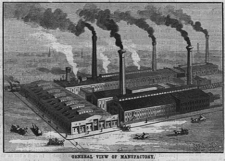 |
|
 |
|
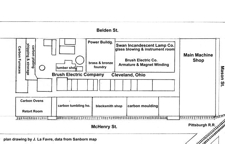 |
| Brush Electric Light & Power 1882 (15) |
|
Brush Electric Light & Power 188X (12) |
|
Brush Electric Light & Power 1889 (4) |
|
Internal Factory Layout 1889 (4) |
|
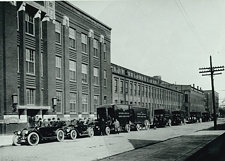 |
|
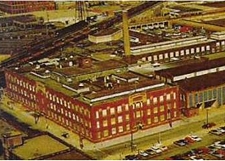 |
|
 |
|
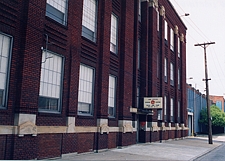 |
| Moving Day to Nela Park, 1913 (13) |
|
General View of Site, 1970s |
|
General View of Factory, 1997 (14) |
|
Front Entrance of Factory, 1997 (14) |
|
 |
|
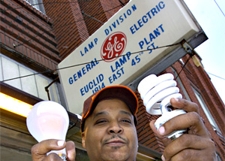 |
|
|
|
|
| Rear View of Factory, 1997 (14) |
|
Announcement of Closure, 2007 (11) |
|
|
|
|
Examples of Euclid Lamps
Carbon Filament
|
 |
|
 |
|
 |
|
|
|
|
|
|
| Brush-Swan c.1885-93 |
|
Brush-Swan c.1893-95 |
|
FtWayne Tipless 1897-98 |
|
|
|
|
|
|
| 1 |
Brush Group Website |
| 2 |
Biography of Brush, by Jeffrey Lafavre |
| 3 |
History of Brush in the UK |
| 4 |
Brush Electric Factory, by Jeffrey Lafavre |
| 5 |
Death of a Lightbulb, J. Otten, Blue Ocean Publishing 2012, pp.20,26. |
| 6 |
Incandescent Lampmakers in Cleveland 1884-1905, Early Incandescent Lamps website, E.J. Covington. |
| 7 |
Cleveland-Based Lamp Manufacturers, The Incandescent Electric Lamp 1880-1925, E.J. Covington, NELA Press, 1998 pp.15. |
| 8 |
A Century of Light, James A. Cox, published by The Benjamin Company / Rutgers, 1979, ISBN 0-87502-062-3, pp.42-46.
|
| 9 |
NELA Park - A Brief History, Early Incandescent Lamps website, E.J. Covington. |
| 10 |
U.S. Tourism Website - NELA Park. |
| 11 |
Cleveland Scene news report on closure of Euclid Lamp Plant, 2008. |
| 12 |
Electricmuseum Website |
| 13 |
GE Lighting Pressroom - Centenary Old Bulbs |
| 14 |
Visit of author to the Euclid Lamp Plant, May 2007. |
| 15 |
Scripophily Old Stock Certificates |
|
|
|
|
|